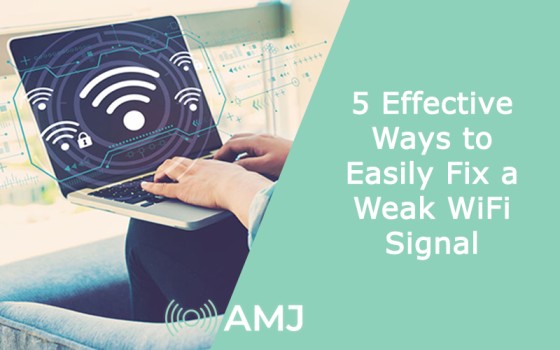A weak WiFi signal can be called a modern-day nightmare for most users because it can lead to poor loading times, delayed opening of webpages and applications, and lost connections, which can seriously test your patience. Most users want to have a strong WiFi signal so that they can access the internet with ease without having to worry about lost connections or poor loading times.
However, a weak WiFi signal is a problem that affects a huge number of households worldwide. Fortunately, this problem can be fixed easily so that you can have an enjoyable internet experience, and here is how you can do so.
Contents
Use a Modern, Long-Range Router
To start things off, the first thing that you need to make sure of is that you have a router with a long enough range to transmit WiFi signals throughout the entire house. If you have an old and obsolete WiFi router from a decade ago, it won’t have an extended range and won’t be able to transmit signals throughout your house, due to which you could be facing the problem of a weak WiFi signal.
This problem can be fixed by getting a modern and long-range router that not only has a long enough range to provide a WiFi signal throughout the entire house but can also provide reliable and high-speed internet connectivity to all of the devices in your household.
Use a WiFi Range Extender
Even if you have a modern long-range router and the WiFi signal is still weak or struggling to reach all ends of your house or office, it is time that you buy a range extender that can easily fix this problem for you. If you have a very large home or office, you are going to face the problem of a weak WiFi signal, no matter which router you choose because no router can provide consistent coverage throughout a large home or office.
To fix the issue of a weak WiFi signal in your large office or home, buy a WiFi range extender. There are multiple manufacturers that manufacture quality range extenders like Netgear. WiFi range extenders are easy to set up through a default IP address like http://10.0.0.1 and should do the trick for most houses and offices by eliminating dead zones.
Don’t Hide Your Router
A mistake that most people make when it comes to router placement is that they try to hide it. Routers aren’t always the most pleasing thing to look at and most people try to hide in their cupboard, behind the TV, or in a box. While this shouldn’t be a problem for small apartments and offices, for large houses and offices, hiding your router can block the WiFi signals, leading to a weak and inconsistent WiFi signal throughout the building.
A router that is placed openly without any obstructions nearby and with antennas pointed upwards will perform much better than a router that you have placed behind the TV or inside the cupboard. So ensure you place your router in an open place and don’t hide it.
Download and Install Router Updates
While not as frequent as app updates, router manufacturers release firmware updates on a regular basis that come with stability and performance fixes. Even if you are running the Piso Wifi, router updates can improve the performance and stability of your WiFi network. Therefore, you should check for router updates automatically, as well as on the manufacturer’s websites to download and install all the new updates.
Kick Freeloaders Off
Having too many users on the network can also lead to a weak WiFi signal, which can be fixed by kicking freeloaders off your network. To improve your WiFi signal, you should consider kicking all of the freeloaders off your networks, be it your next-door neighbors or someone else. This can be done simply by changing the SSID and password of your WiFi network so that only you can access the WiFI on your devices with the right combination of SSID and password.












![Index of Money Heist [Season 1, 2, 3 & 4 – All Episodes, Cast and Plot] Index of Money Heist](https://www.asiamediajournal.com/wp-content/uploads/2021/05/Index-of-Money-Heist-3-100x70.jpg)